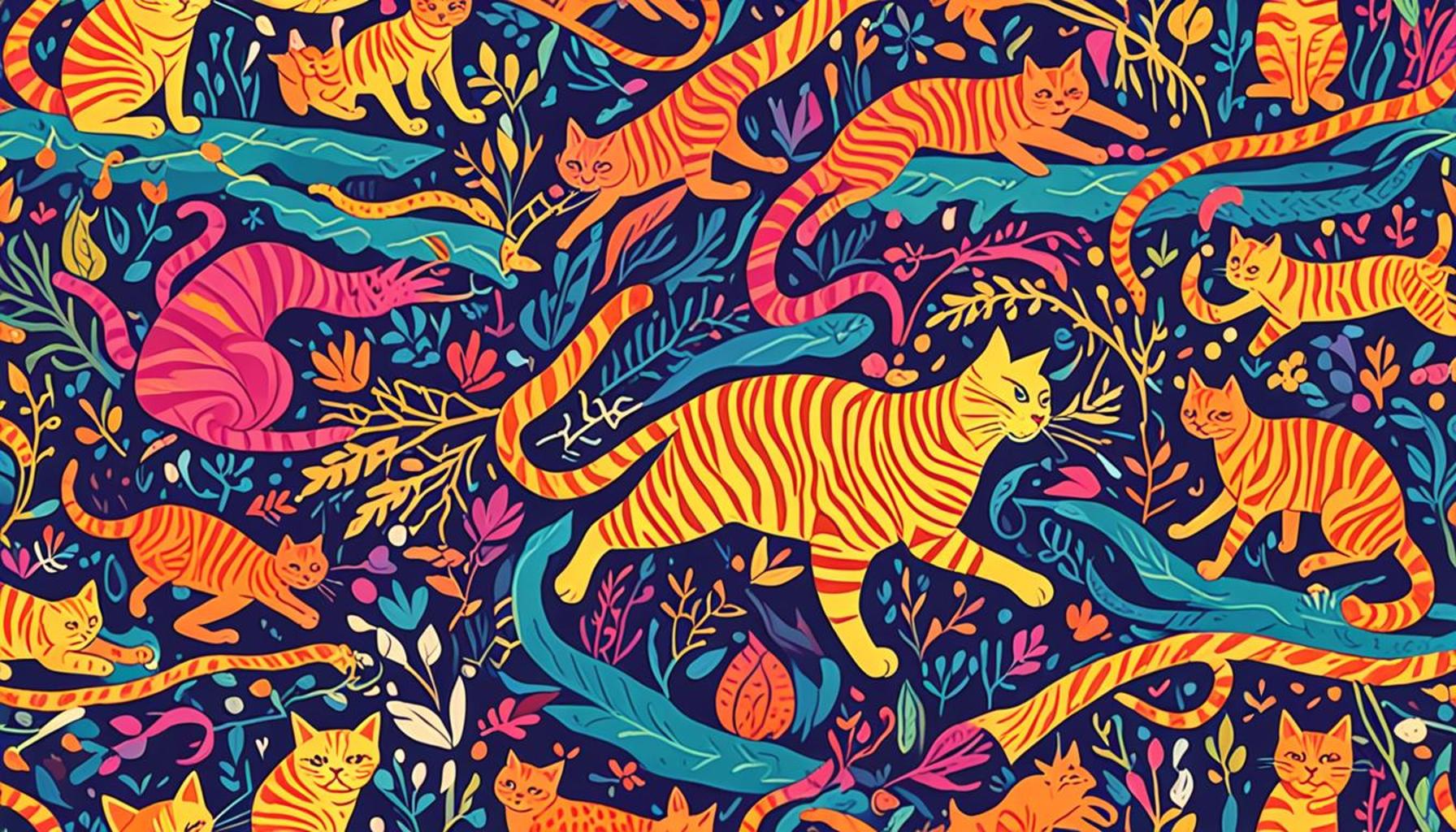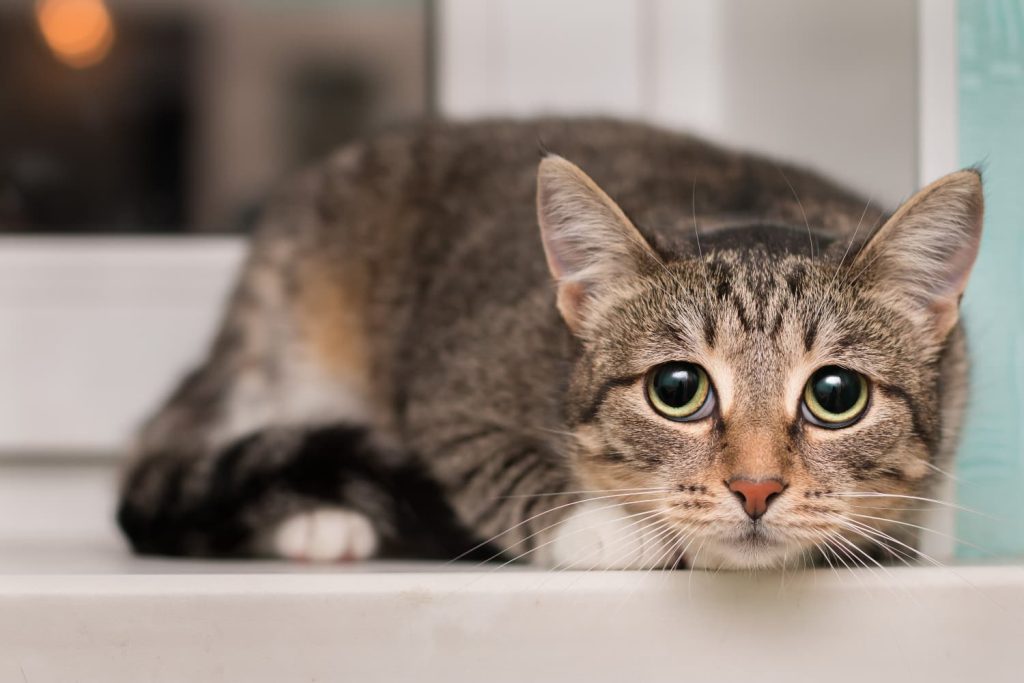Unveiling the Hunting Behavior of Felines: What Pet Cats Teach Us About Their Natural Instincts

A Deep Dive into Feline Instincts
Pet cats, often seen lounging casually or napping, exhibit behaviors that go far beyond their seemingly lazy demeanor. Despite their comfortable lifestyles, these companions carry within them a complex set of instinctual behaviors shaped by their wild ancestors. Understanding these behaviors is essential to comprehending both their psychological makeup and emotional well-being.
Instinctual behaviors in cats are not merely charming quirks; they reflect deep-rooted survival strategies honed over thousands of years. For instance, the way cats stalk their ‘prey’, whether it’s a toy or a wiggly piece of string, showcases their natural stealth. With remarkable precision, they approach their target using calculated movements, often crouching low to the ground and using their acute senses to detect any movements. This behavior illustrates the stalking techniques cats utilize in the wild, where maintaining silence and invisibility is crucial for a successful hunt.
The pounce precision of a cat is nothing short of extraordinary. With muscles designed for bursts of speed and agility, a cat can leap several times their length to catch prey. This mechanism not only serves them in their instinctual hunting but also plays a pivotal role during their playful interactions with toys. When a cat pounces on a laser pointer dot, their instincts take over, mirroring the actions of a wild hunter keen on catching its meal.
Moreover, the play behavior we observe in our feline friends is a critical component of their hunting instincts. Engaging in mock hunts with feathered toys or crumpled paper balls, they practice essential skills necessary for survival. This playful behavior is interconnected with their mental health; regular interaction that channels these instincts can help alleviate stress and boredom, contributing significantly to their overall well-being. Behavioral specialists note that environmental enrichment, such as climbing structures and interactive toys, not only satisfies these instincts but also enhances a cat’s quality of life.
The observations of these various instincts allow us to appreciate cats not just as domestic animals, but as reminders of a wild ancestry that still influences their actions. By tuning into these behaviors, owners can foster a supportive environment that acknowledges the feline’s innate instincts while promoting a strong bond between pet and owner. As we explore further into the world of feline hunting behaviors, we invite you to uncover the layers of complexity behind these endearing creatures and learn how their instincts inform their interactions with the world around them.

DISCOVER MORE: Click here for essential puppy training tips
Understanding the Anatomy of Feline Hunting Techniques
To truly appreciate the hunting prowess of our pet cats, it is essential to explore the intricate anatomy that facilitates their natural instincts. From their exceptional senses to their uniquely adapted body structure, each element contributes to their ability to hunt. Felines possess a heightened sense of hearing, vision, and smell—key tools that serve them well both in the wild and at home. The combination of these senses allows them to detect the faintest rustle of a mouse or the scent of a potential meal even in the most cluttered environments.
Hearing is particularly acute in cats; they can hear sounds at frequencies as high as 64,000 Hertz, making their sense of hearing more sensitive than that of humans. This capability helps them pick up on small movements that would otherwise go unnoticed. Coupled with their superior night vision, which allows them to see in light levels six times lower than what a human requires, cats are formidable nocturnal hunters. Their eyes have a heightened number of rod cells, which provide enhanced vision in low-light conditions and assist them in hunting during dusk or dawn—prime times for predation in the wild.
Beyond their extraordinary senses, the physical structure of cats is a testament to evolutionary efficiency. The muscle composition in their legs and paws offers them unparalleled agility and speed. Unlike most domesticated animals, cats can typically accelerate quickly, thanks to a unique skeletal system that provides a greater range of motion. Their retractable claws play a significant role in this equation; by allowing cats to keep their claws sharp for gripping and climbing, they maintain their hunting capabilities while also ensuring safety as they navigate their surroundings.
Understanding these physical adaptations uncovers why cats exhibit specific behaviors that mirror those of their wild counterparts, such as:
- Stalking and Pouncing: As mentioned, the classic stalking behavior isn’t just play; it’s a genetic propensity inherited from their ancestors.
- Mainly Nocturnal Agility: Cats are crepuscular, hunting during twilight hours, aligning their natural instincts with times of lower visibility.
- Social Predation Tactics: Though often solitary hunters, some felines exhibit social hunting behaviors, emphasizing a spectrum of tactics in their survival toolkit.
By dissecting the anatomy of feline hunting techniques, we gain insight not only into their wild ancestry but also into how best to cater to their needs as pets. By providing environments that allow for natural behaviors—whether it’s creating vertical spaces for climbing or offering toys that encourage stalking and pouncing—pet owners can effectively nurture these instinctual behaviors while strengthening the bond with their feline companions.
As we continue to explore the nuances of feline hunting behavior, it becomes evident that every small action reflects a deep-rooted instinct that goes beyond mere playfulness. Recognizing this ingrained nature is crucial in ensuring our cats live fulfilling, instinct-driven lives.
| Aspect of Hunting | Significance to Behavior |
|---|---|
| Instinctual Stalking | Cats exhibit stealthy movements, which demonstrate their natural instincts and adaptiveness in hunting. |
| Pouncing Techniques | Cats utilize powerful leaps to catch their prey, illuminating their agility and strength as natural predators. |
| Play Behavior | Engaging in play mimics hunting scenarios, showcasing how instinctual behaviors manifest even in indoor environments. |
| Vocalizations | Different sounds can indicate excitement or intent, helping them interact with both owners and imaginary prey. |
The hunting behavior of felines is not merely about finding and capturing food; it reflects a complex suite of instincts that influence their interactions with the world around them. By delving into the fascinating aspects of feline hunting techniques, we can unlock insights into not only their behavior but also the deeper evolutionary traits they possess.One striking feature of their hunting behavior is their instinctual stalking method. Cats are natural ambushers, employing stealth to approach potential prey. This innate behavior enhances their adaptability, showcasing the importance of stealth for survival in both wild and domestic settings. Coupled with this is their remarkable pouncing ability. Cats must rely on powerful leaps, which exhibit their agility and muscular prowess, essential qualities that confirm their status as apex predators.Additionally, playful activities can reveal a cat’s hunting instincts. When cats engage in play, they replicate hunting scenarios, offering them crucial practice in pouncing and stalking. This behavior illustrates how domesticated cats retain close ties to their wild ancestry. Finally, their vocalizations serve as an important aspect of communication. Sounds may shift depending on mood and situation, illustrating how vocal cues play a role in both interaction and predation dynamics.Each of these behaviors exemplifies the fascinating connection between instinct and action in pet cats. Understanding these behaviors not only enriches our relationship with our feline friends but also reminds us of their primal connections to the natural world. Through further exploration, we open doors to appreciate the depth of what these creatures can teach us.
LEARN MORE: Click here for essential pet adoption resources
Decoding the Behavioral Patterns of Domestic Cats
As we delve deeper into the hunting behavior of felines, it becomes clear that their actions are not mere whims or playful bursts of energy; they are deeply entrenched in instinctive behavior that has been honed over thousands of years. Understanding these behavioral patterns enables us to appreciate the complex nature of our pet cats and provides valuable insights for their care and enrichment.
One of the most striking aspects of feline hunting behavior is their inherent play behavior. Though often dismissed as a trivial activity, cat play mirrors real hunting sequences and is critical for their mental and physical health. Kittens engage in mock hunting, which involves stalking, pouncing, and capturing imaginary prey. This behavior is not simply for fun; it’s essential for developing the skills they would need in the wild. Engaging with toys that simulate the movement of prey—like feather wands or laser pointers—encourages this natural instinct and reinforces muscle memory critical for hunting.
A study published in the journal *Behavioral Ecology* highlights that play serves not only as a preparatory exercise for hunting but also aids in developing social skills among kitten littermates. Through interaction and competition, cats learn how to gauge distance and timing—essential skills for survival. This finding emphasizes the importance of socialization during the formative months of a cat’s life.
Furthermore, our pet cats exhibit what behavioral ecologists refer to as the “pounce and pause” strategy. This technique involves remaining still for a period, allowing them to gauge their surroundings and better determine the right moment to strike. This behavior mimics a successful hunting tactic observed in their wild relatives. Pet owners often see this when cats interact with their toys; they may crouch and stay motionless for several seconds before lunging forward. Encouraging this natural practice through environmental enrichment—such as hiding treats around the house—can simulate a hunting experience and provide mental stimulation.
Interestingly, the social structure of domestic cats also plays a role in their hunting behavior. Unlike their solitary wild counterparts, pet cats may adjust their behaviors based on their environment and social interactions. A cat that lives in a multi-cat household may develop cooperative hunting tactics during playtime, where the cats appear to work in unison to “hunt” a toy, showcasing the adaptability of their instincts. This adaptability is vital, with factors like age, experience, and the presence of other animals influencing how cats approach hunting behaviors.
To aid our feline companions, it is crucial to create environments that replicate their instinctual hunting grounds. This can be achieved by incorporating vertical spaces, such as cat trees or shelves, as well as interactive toys that require them to leap, climb, and solve problems. Numerous studies, including reports from the American Association of Feline Practitioners, advocate that engaging pet cats in this manner not only alleviates boredom but also reduces stress-related behaviors.
By unraveling the layers beneath their behavioral patterns, pet owners can often find new ways to engage with their cats, significantly enhancing their quality of life. The subtle complexities of feline behavior challenge us to rethink how we perceive our pets, as we recognize that every leap, pounce, and playful swipe speaks to a lineage rich in survival strategies.
DISCOVER MORE: Click here for essential pet safety tips
Conclusion: Embracing Your Cat’s Natural Instincts
In conclusion, unveiling the hunting behavior of felines provides not only a glimpse into their innate instincts but also highlights the profound connection between their wild ancestors and our beloved pet cats. Understanding these intricate behavioral patterns reinforces the notion that our feline companions thrive when their natural instincts are acknowledged and nurtured.
From the vital role of play behavior in developing hunting skills to the importance of social interactions among littermates, it’s evident that facilitating these behaviors is essential for feline well-being. The “pounce and pause” strategy, often observed during play, emphasizes the need for patience and precision—qualities that enrich a cat’s life. Additionally, as we see how multi-cat households can inspire cooperative hunting tactics, we recognize that social structures play a crucial role in shaping their behavior.
As responsible pet owners, it is imperative to recreate environments that cater to these instinctual behaviors—whether through vertical spaces, interactive toys, or hidden treats. Such enrichment not only provides necessary mental stimulation but also alleviates boredom and stress-related behaviors. By implementing these strategies, we can enhance our cats’ quality of life, offering them the joy and fulfillment they naturally seek.
Ultimately, the behaviors exhibited by our pet cats challenge us to broaden our perspectives. Every leap, pounce, and playful engagement reflects a legacy steeped in survival and instinct. By taking the time to understand and engage with these behaviors, we can facilitate a deeper bond with our feline friends while honoring their wild heritage.



